Abstract
BHK-21 cells were transformed with polyoma virus mutants Ts-a and Ts-25 by using a temperature shift from 31 to 39 C at 5 days after infection so that rescuable transformants could be isolated. Clones which yielded virus after fusion with mouse cells were scored and maintained at 39 C in the presence of antipolyoma virus antiserum. Generally, no infectious viral deoxyribonucleic acid (DNA) could be found in Hirt supernatant fractions of these lines when maintained at 39 C, but DNA-DNA reannealing measurements detected two to six viral genomes per diploid cell genome in the nuclear DNA. Fusion with permissive cells was not necessary to induce the synthesis of infectious virus; cell lines shifted to 31 C produce the equivalent of 100 viral genomes per cell after 5 days. In some cell lines up to 1% of the cells formed infectious centers upon a shift to 31 C, and 100% of the subclones of a line were inducible. Growth at 31 C selected for a noninducible population which was still transformed.
Full text
PDF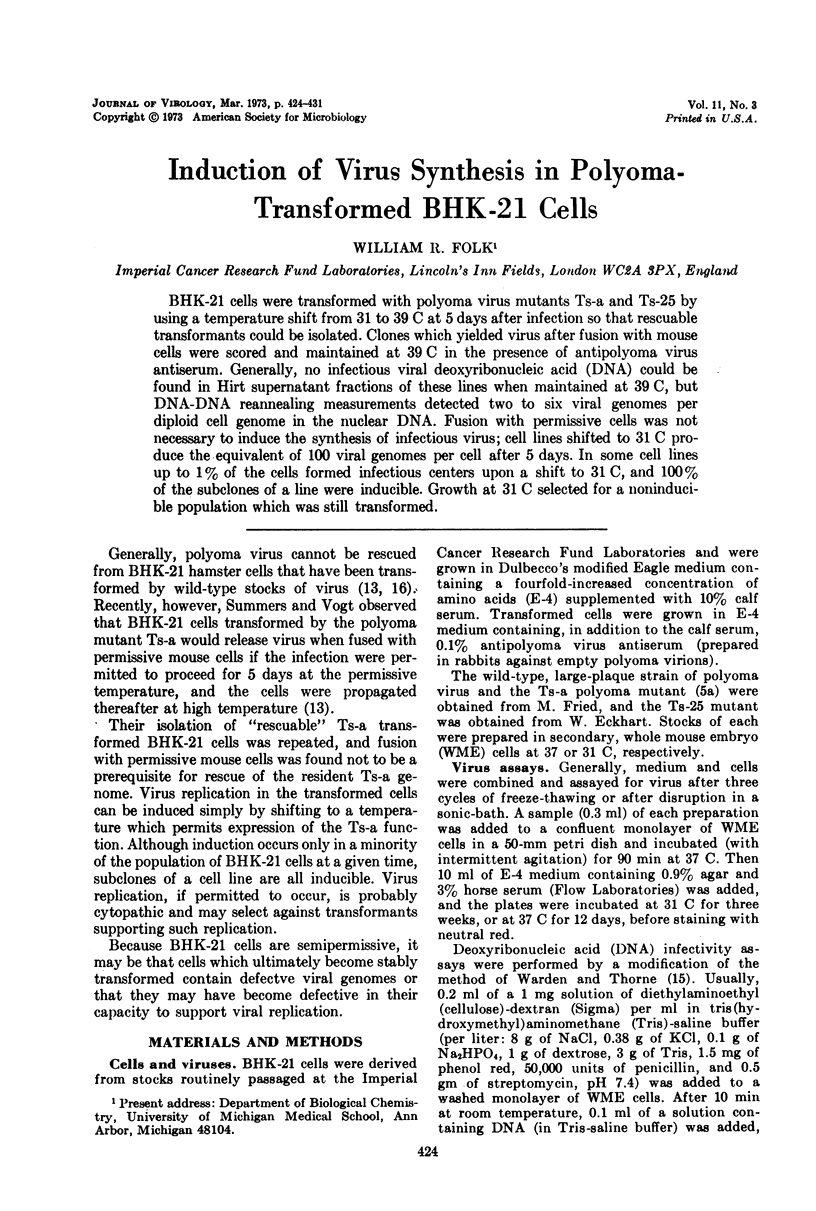
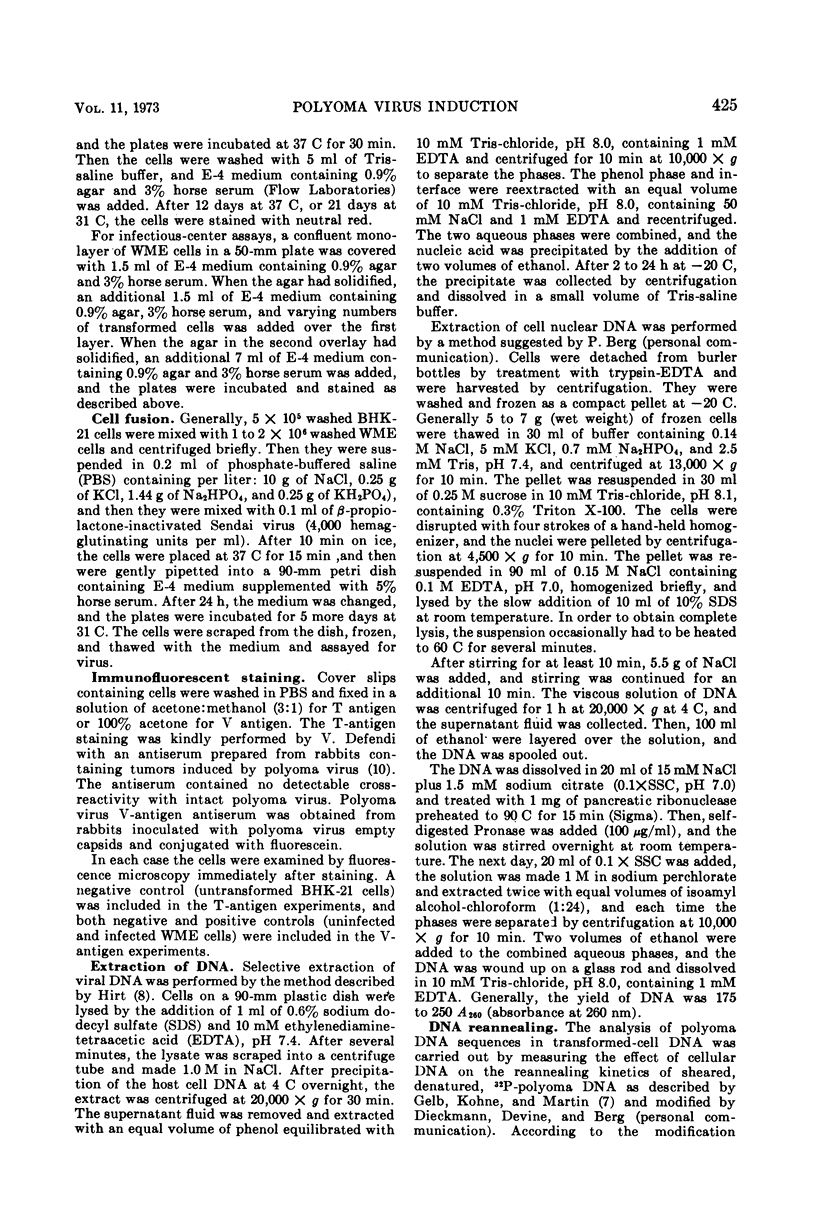
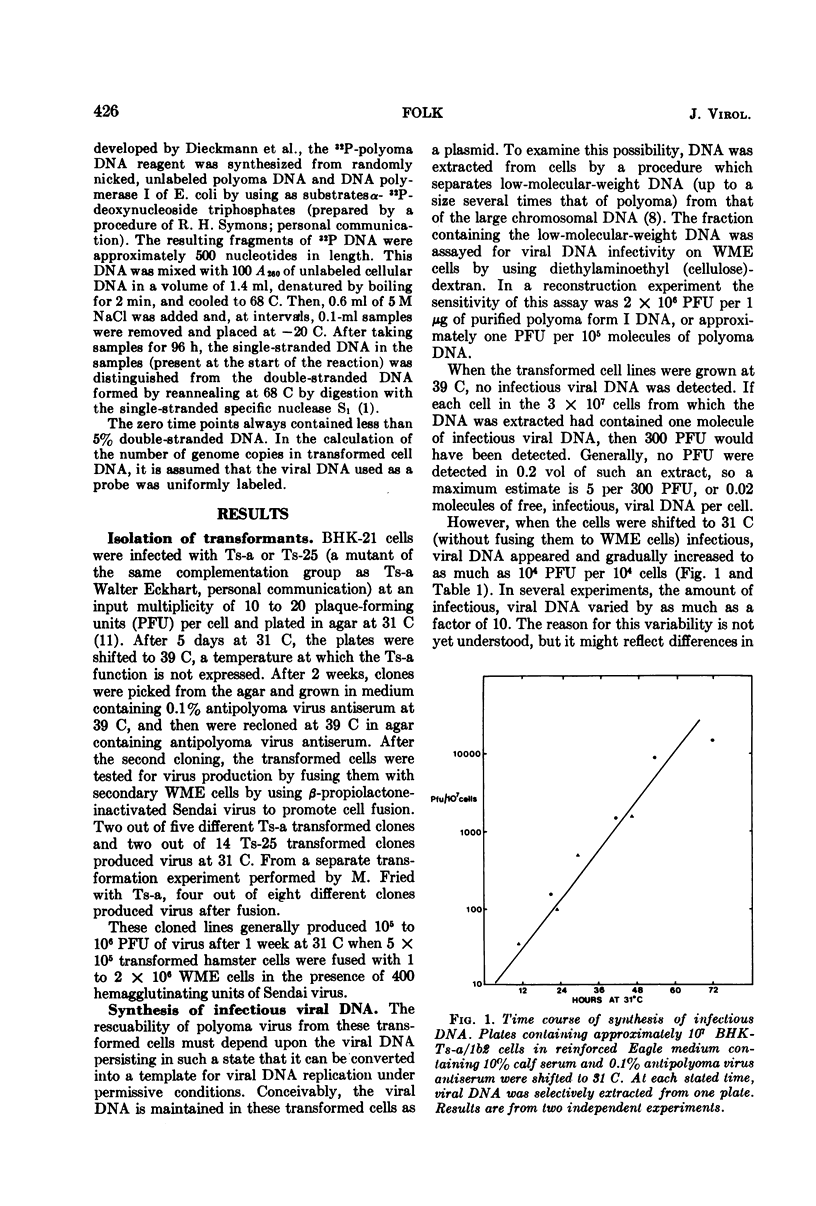
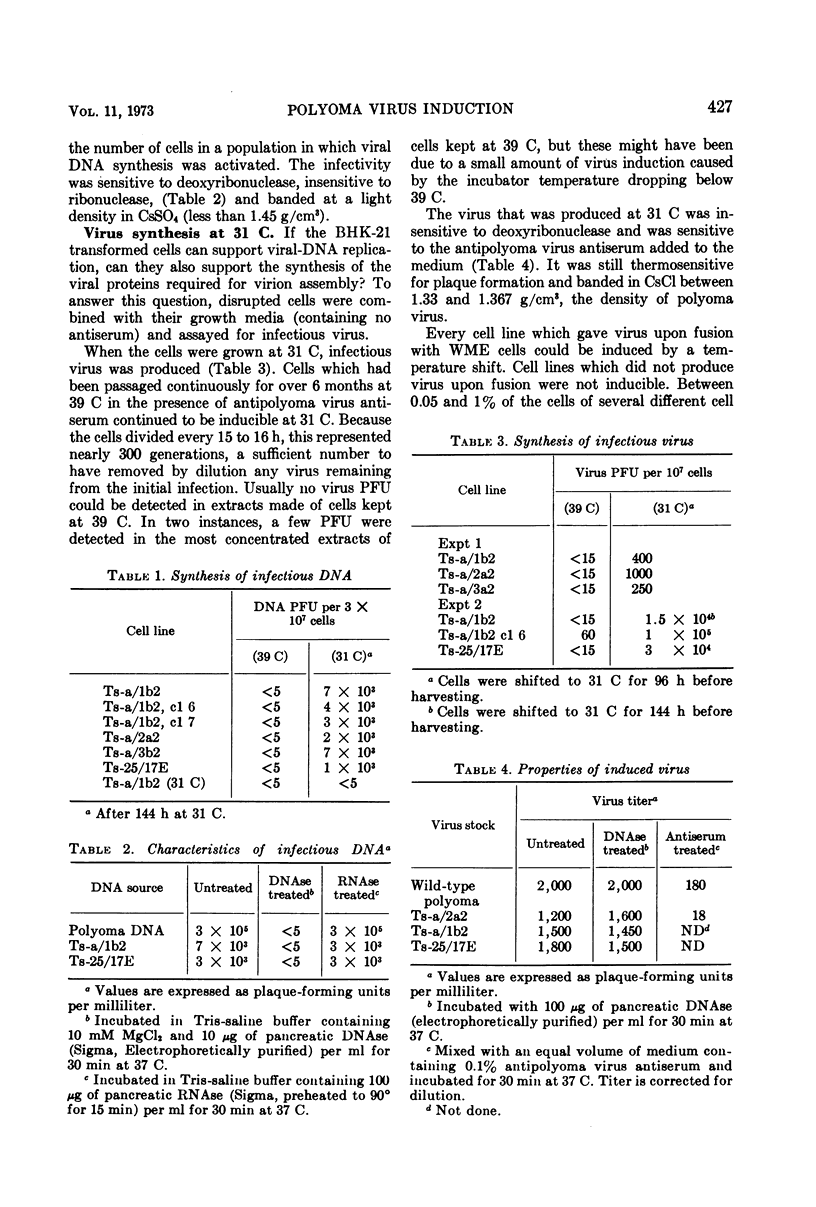
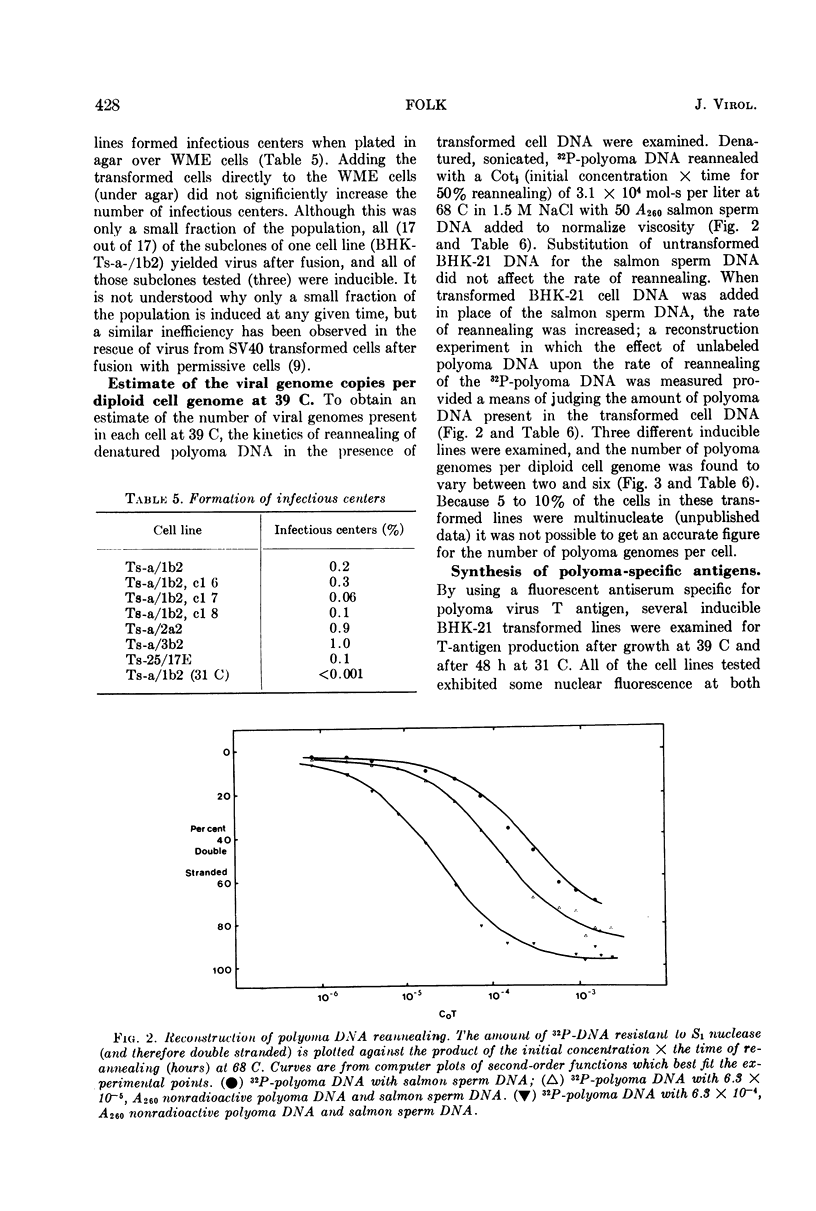
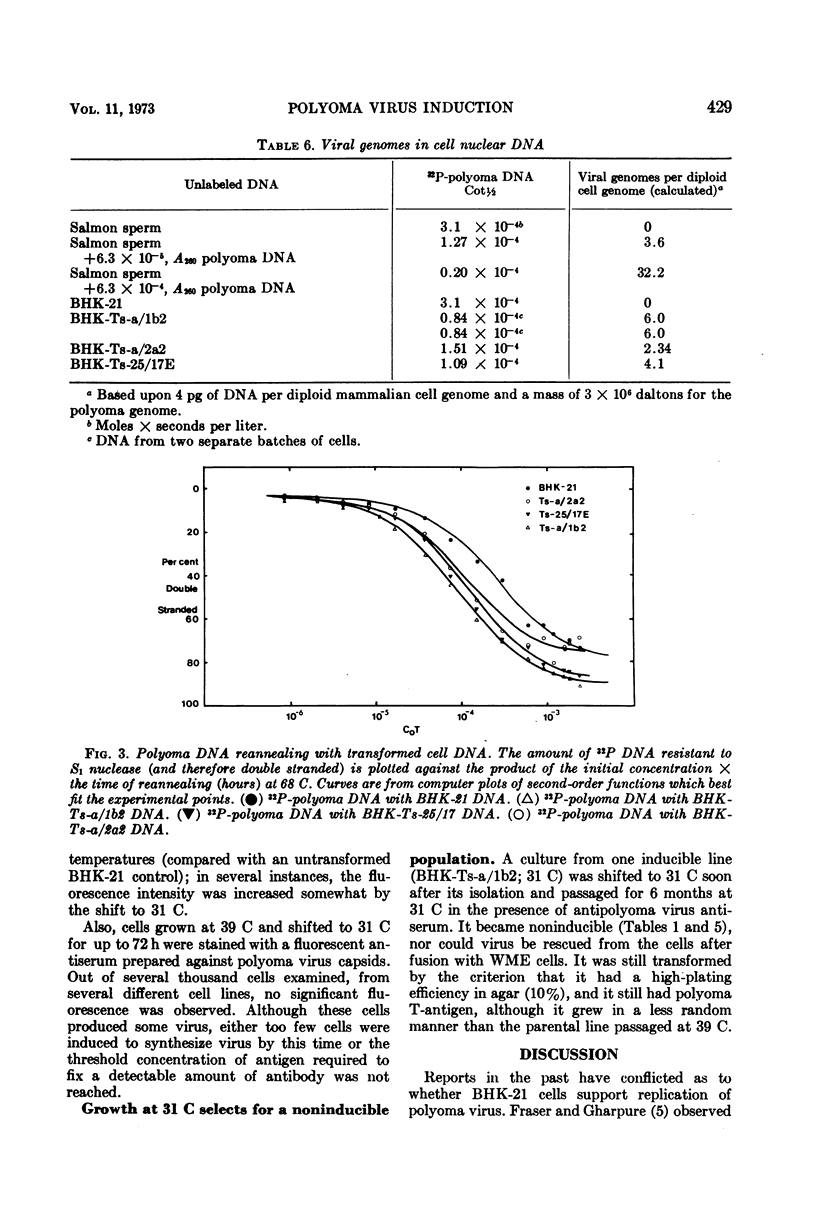
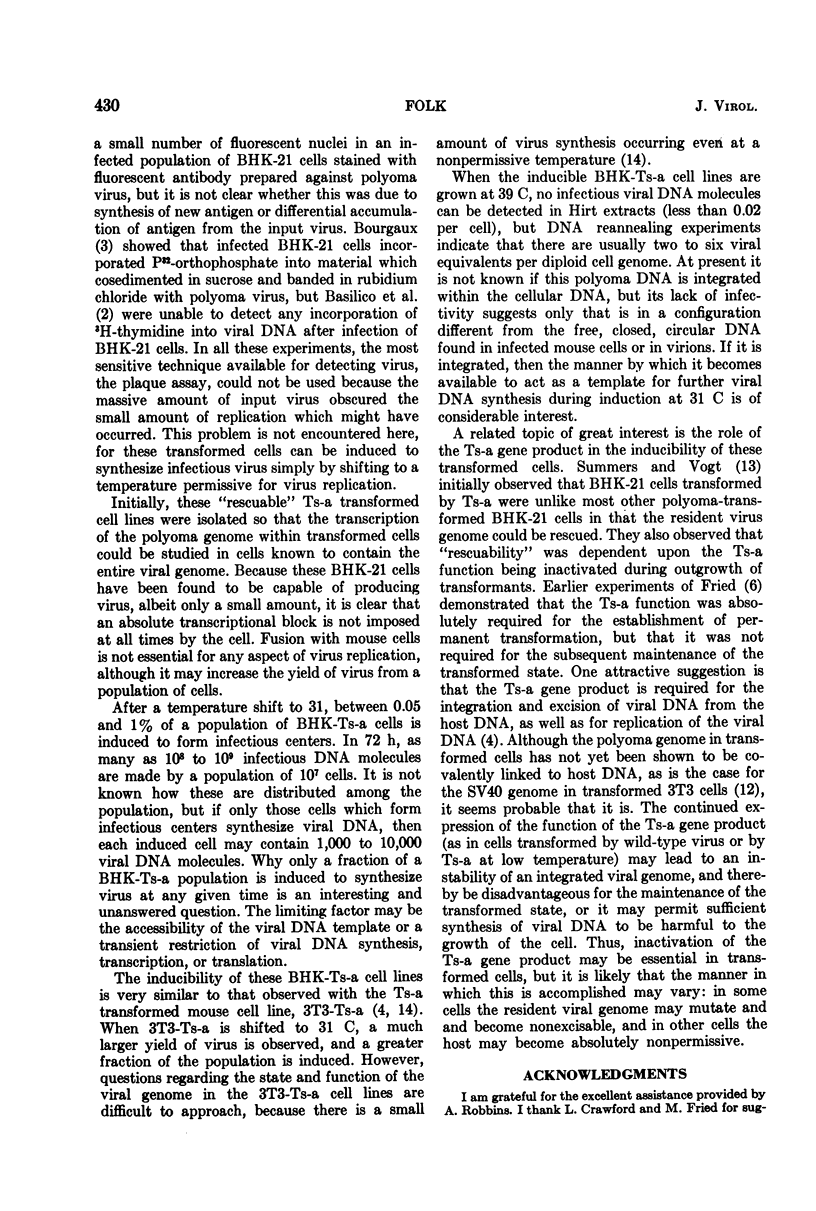
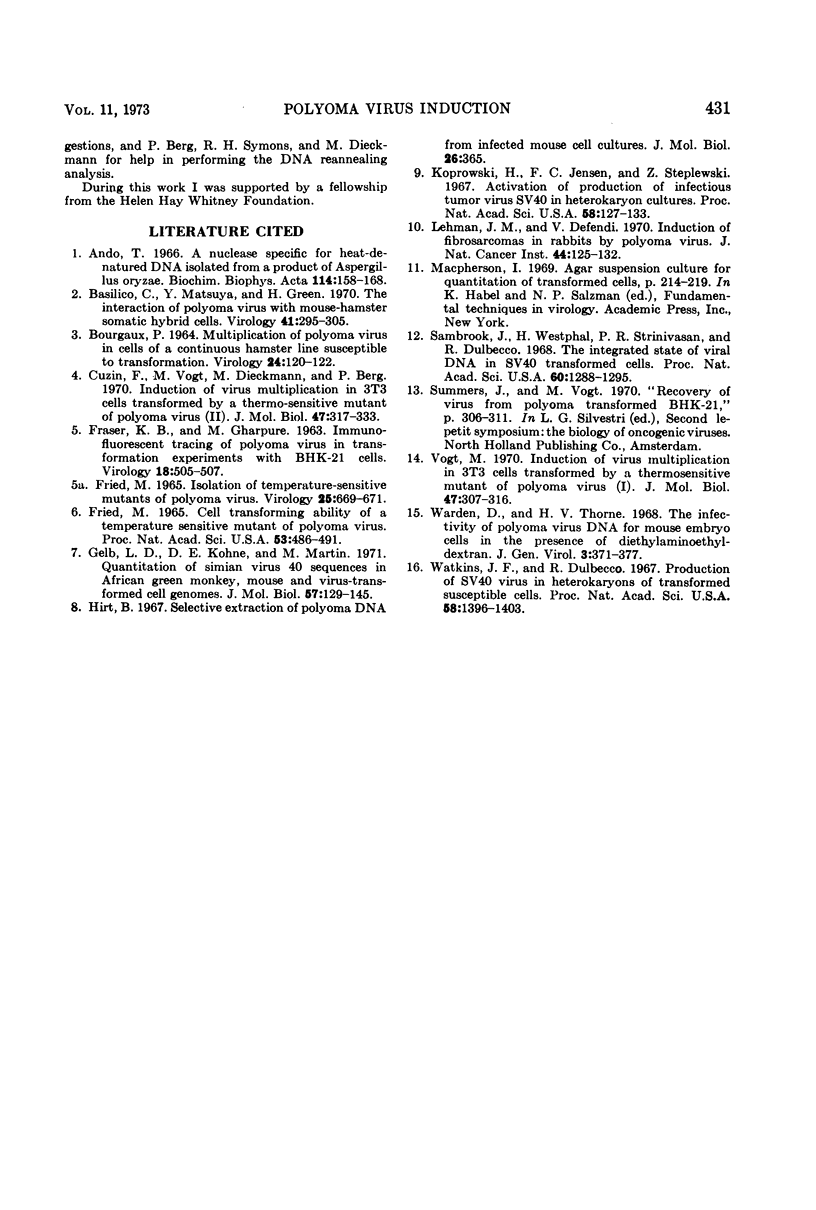
Selected References
These references are in PubMed. This may not be the complete list of references from this article.
- Ando T. A nuclease specific for heat-denatured DNA in isolated from a product of Aspergillus oryzae. Biochim Biophys Acta. 1966 Jan 18;114(1):158–168. doi: 10.1016/0005-2787(66)90263-2. [DOI] [PubMed] [Google Scholar]
- BOURGAUX P. MULTIPLICATION OF POLYOMA VIRUS IN CELLS OF A CONTINUOUS HAMSTER LINE SUSCEPTIBLE TO TRANSFORMATION. Virology. 1964 Sep;24:120–122. doi: 10.1016/0042-6822(64)90158-8. [DOI] [PubMed] [Google Scholar]
- Basilico C., Matsuya Y., Green H. The interaction of polyoma virus with mouse-hamster somatic hybrid cells. Virology. 1970 Jun;41(2):295–305. doi: 10.1016/0042-6822(70)90082-6. [DOI] [PubMed] [Google Scholar]
- Cuzin F., Vogt M., Dieckmann M., Berg P. Induction of virus multiplication in 3T3 cells transformed by a thermosensitive mutant of polyoma virus. II. Formation of oligometric polyoma DNA molecules. J Mol Biol. 1970 Feb 14;47(3):317–333. doi: 10.1016/0022-2836(70)90305-0. [DOI] [PubMed] [Google Scholar]
- FRASER K. B., GHARPURE M. Immunoofluorescent tracing of polyoma virus in transformation experiments with BHK 21 cells. Virology. 1962 Nov;18:505–507. doi: 10.1016/0042-6822(62)90048-x. [DOI] [PubMed] [Google Scholar]
- FRIED M. CELL-TRANSFORMING ABILITY OF A TEMPERATURE-SENSITIVE MUTANT OF POLYOMA VIRUS. Proc Natl Acad Sci U S A. 1965 Mar;53:486–491. doi: 10.1073/pnas.53.3.486. [DOI] [PMC free article] [PubMed] [Google Scholar]
- FRIED M. ISOLATION OF TEMPERATURE-SENSITIVE MUTANTS OF POLYOMA VIRUS. Virology. 1965 Apr;25:669–671. doi: 10.1016/0042-6822(65)90098-x. [DOI] [PubMed] [Google Scholar]
- Gelb L. D., Kohne D. E., Martin M. A. Quantitation of Simian virus 40 sequences in African green monkey, mouse and virus-transformed cell genomes. J Mol Biol. 1971 Apr 14;57(1):129–145. doi: 10.1016/0022-2836(71)90123-9. [DOI] [PubMed] [Google Scholar]
- Hirt B. Selective extraction of polyoma DNA from infected mouse cell cultures. J Mol Biol. 1967 Jun 14;26(2):365–369. doi: 10.1016/0022-2836(67)90307-5. [DOI] [PubMed] [Google Scholar]
- Koprowski H., Jensen F. C., Steplewski Z. Activation of production of infectious tumor virus SV40 in heterokaryon cultures. Proc Natl Acad Sci U S A. 1967 Jul;58(1):127–133. doi: 10.1073/pnas.58.1.127. [DOI] [PMC free article] [PubMed] [Google Scholar]
- Lehman J. M., Defendi V. Induction of fibrosarcomas in rabbits by polyoma virus. J Natl Cancer Inst. 1970 Jan;44(1):125–132. [PubMed] [Google Scholar]
- Sambrook J., Westphal H., Srinivasan P. R., Dulbecco R. The integrated state of viral DNA in SV40-transformed cells. Proc Natl Acad Sci U S A. 1968 Aug;60(4):1288–1295. doi: 10.1073/pnas.60.4.1288. [DOI] [PMC free article] [PubMed] [Google Scholar]
- Vogt M. Induction of virus multiplication in 3T3 cells transformed by a thermosensitive mutant of polyoma virus. I. Isolation and characterization of Ts-a-3T3 cells. J Mol Biol. 1970 Feb 14;47(3):307–316. doi: 10.1016/0022-2836(70)90304-9. [DOI] [PubMed] [Google Scholar]
- Warden D., Thorne H. V. The infectivity of polyoma virus DNA for mouse embryo cells in the presence of diethylaminoethyl-dextran. J Gen Virol. 1968 Dec;3(3):371–377. doi: 10.1099/0022-1317-3-3-371. [DOI] [PubMed] [Google Scholar]
- Watkins J. F., Dulbecco R. Production of SV40 virus in heterokaryons of transformed and susceptible cells. Proc Natl Acad Sci U S A. 1967 Oct;58(4):1396–1403. doi: 10.1073/pnas.58.4.1396. [DOI] [PMC free article] [PubMed] [Google Scholar]


